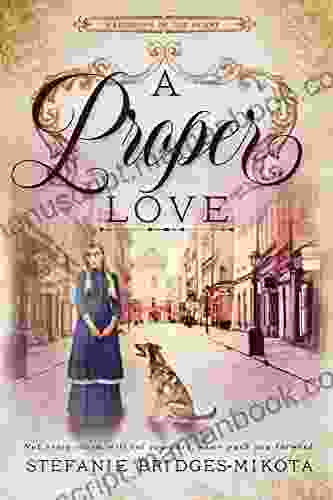Shaming Gestures and Gender Politics on the Renaissance Stage: A Comprehensive Exploration of Nonverbal Communication and Its Societal Implications

The Renaissance period witnessed a profound transformation in artistic expression and intellectual thought. This era, characterized by a renewed interest in classical learning and humanism, also ushered in significant shifts in societal norms and gender dynamics.
The stage, as a powerful medium of storytelling and cultural reflection, played a pivotal role in shaping and mirroring these changes. Theatrical performances offered a unique platform to explore and critique societal values, including those pertaining to gender and social status.
4.4 out of 5
| Language | : | English |
| File size | : | 6508 KB |
| Text-to-Speech | : | Enabled |
| Screen Reader | : | Supported |
| Enhanced typesetting | : | Enabled |
| Print length | : | 273 pages |
One particularly striking aspect of Renaissance theater was the prevalent use of shaming gestures. These nonverbal cues conveyed a wide range of emotions, from contempt and mockery to disapproval and condemnation. Notably, these gestures were often employed in a gendered manner, reinforcing prevailing power structures and societal expectations of women and men.
In this comprehensive article, we will delve into the world of shaming gestures on the Renaissance stage. Through a thorough examination of historical texts, theatrical performances, and cultural norms, we will uncover the ways in which these gestures shaped gender politics and influenced the construction of gender identities.
Examining Theatrical Sources
To fully understand the significance of shaming gestures on the Renaissance stage, it is essential to examine the theatrical sources of the period. Plays by renowned playwrights such as William Shakespeare, Christopher Marlowe, and Ben Jonson provide a rich repository of examples that showcase the use and impact of these gestures.
In Shakespeare's "The Taming of the Shrew," for instance, the character of Petruchio employs a variety of shaming gestures to assert his dominance over his wife, Katharina. These gestures, such as slapping her face and spitting on her, serve to publicly humiliate and shame Katharina, reinforcing the patriarchal values of the time.
Similarly, in Marlowe's "Tamburlaine the Great," the title character uses shaming gestures to intimidate and control his enemies. By pointing his finger at them or making rude hand gestures, Tamburlaine demonstrates his contempt for those who defy him, reinforcing his position as a powerful and ruthless ruler.
Exploring Cultural Contexts
Beyond the stage itself, shaming gestures were deeply embedded in the cultural contexts of the Renaissance period. These gestures were not merely theatrical conventions but were rooted in societal norms and beliefs about gender.
In many Renaissance societies, women were expected to be submissive and chaste, while men were expected to be assertive and dominant. Shaming gestures served to reinforce these expectations by publicly exposing those who deviated from these norms.
For example, women who were perceived as immodest or unchaste could be subjected to shaming gestures such as having their clothes torn or being pelted with eggs. These gestures effectively ostracized these women from society, deterring others from engaging in similar behavior.
Conversely, men who were perceived as weak or cowardly could also be subjected to shaming gestures. These gestures, such as being called a "cuckold" or having their clothes stripped off, served to publicly humiliate and emasculate these men, reinforcing the prevailing ideals of masculinity.
Construction of Gender Identities
The use of shaming gestures on the Renaissance stage not only reflected societal expectations but also played a role in shaping gender identities. These gestures contributed to the construction of gender as a binary opposition, with women being associated with weakness and shame and men being associated with strength and honor.
By repeatedly witnessing shaming gestures directed at women, female audience members may have internalized these messages and adopted a sense of shame and inferiority. Similarly, male audience members may have learned to associate masculinity with dominance and the avoidance of shame.
In this way, shaming gestures on the Renaissance stage reinforced the prevailing gender stereotypes and limited the possibilities for individuals to express themselves outside of these rigid categories.
Gender Politics in Practice
The use of shaming gestures on the Renaissance stage had a profound impact on gender politics within theaters and beyond. These gestures reinforced the power dynamics between men and women, silencing dissenting voices and perpetuating patriarchal norms.
Female actors, for example, often faced significant limitations in their roles due to the prevalence of shaming gestures. They were often relegated to playing stereotypical characters, such as the shrewish wife or the chaste maiden, and were subject to harsh criticism if they deviated from these roles.
Male actors, on the other hand, had more freedom to explore a wider range of characters, including those who challenged societal norms. However, even male actors who dared to portray effeminate or weak characters could face ridicule and shaming gestures from the audience.
Shaming gestures played a multifaceted role in the gender politics of the Renaissance stage, reinforcing prevailing power structures, shaping gender identities, and limiting artistic expression. These gestures were not merely theatrical devices but were deeply embedded in the cultural norms and beliefs of the time.
By examining theatrical sources, exploring cultural contexts, and analyzing the construction of gender identities, we gain a deeper understanding of the complex relationship between nonverbal communication, gender, and societal values during the Renaissance period.
As we continue to explore the rich tapestry of Renaissance theater, it is important to recognize the ways in which these shaming gestures shaped the perceptions, experiences, and artistic contributions of women and men alike. By shedding light on these gestures, we can better understand the complexities of gender politics and its impact on the arts throughout history.
4.4 out of 5
| Language | : | English |
| File size | : | 6508 KB |
| Text-to-Speech | : | Enabled |
| Screen Reader | : | Supported |
| Enhanced typesetting | : | Enabled |
| Print length | : | 273 pages |
Do you want to contribute by writing guest posts on this blog?
Please contact us and send us a resume of previous articles that you have written.
 Top Book
Top Book Novel
Novel Fiction
Fiction Nonfiction
Nonfiction Literature
Literature Paperback
Paperback Hardcover
Hardcover E-book
E-book Audiobook
Audiobook Bestseller
Bestseller Classic
Classic Mystery
Mystery Thriller
Thriller Romance
Romance Fantasy
Fantasy Science Fiction
Science Fiction Biography
Biography Memoir
Memoir Autobiography
Autobiography Poetry
Poetry Drama
Drama Historical Fiction
Historical Fiction Self-help
Self-help Young Adult
Young Adult Childrens Books
Childrens Books Graphic Novel
Graphic Novel Anthology
Anthology Series
Series Encyclopedia
Encyclopedia Reference
Reference Guidebook
Guidebook Textbook
Textbook Workbook
Workbook Journal
Journal Diary
Diary Manuscript
Manuscript Folio
Folio Pulp Fiction
Pulp Fiction Short Stories
Short Stories Fairy Tales
Fairy Tales Fables
Fables Mythology
Mythology Philosophy
Philosophy Religion
Religion Spirituality
Spirituality Essays
Essays Critique
Critique Commentary
Commentary Glossary
Glossary Bibliography
Bibliography Index
Index Table of Contents
Table of Contents Preface
Preface Introduction
Introduction Foreword
Foreword Afterword
Afterword Appendices
Appendices Annotations
Annotations Footnotes
Footnotes Epilogue
Epilogue Prologue
Prologue Kathleen Cushman
Kathleen Cushman James V Mcconnell
James V Mcconnell Trimid Dew Lanns
Trimid Dew Lanns David Fennario
David Fennario Rick Carroll
Rick Carroll Robin Goodfellow
Robin Goodfellow Prince Malela
Prince Malela Christina Tosi
Christina Tosi L T Ryan
L T Ryan Steve Berta
Steve Berta Patricia Meredith
Patricia Meredith Helen M King
Helen M King Larry A Winters
Larry A Winters Brian Igoe
Brian Igoe Taylor Anderson
Taylor Anderson Stefanie Bridges Mikota
Stefanie Bridges Mikota Jerrold Mundis
Jerrold Mundis Stephanie Bell
Stephanie Bell Marco Catalano
Marco Catalano Susan Barba
Susan Barba
Light bulbAdvertise smarter! Our strategic ad space ensures maximum exposure. Reserve your spot today!

 Ethan MitchellDomestic Girlfriend 242: Kei Sasuga's Masterpiece, Explored Through a Lens of...
Ethan MitchellDomestic Girlfriend 242: Kei Sasuga's Masterpiece, Explored Through a Lens of... Jared PowellFollow ·5k
Jared PowellFollow ·5k Joel MitchellFollow ·9.8k
Joel MitchellFollow ·9.8k E.E. CummingsFollow ·7k
E.E. CummingsFollow ·7k Gus HayesFollow ·3.6k
Gus HayesFollow ·3.6k Bret MitchellFollow ·17.4k
Bret MitchellFollow ·17.4k Jaylen MitchellFollow ·10k
Jaylen MitchellFollow ·10k Emmett MitchellFollow ·16k
Emmett MitchellFollow ·16k Carson BlairFollow ·6.8k
Carson BlairFollow ·6.8k

 Jaylen Mitchell
Jaylen MitchellPretime Piano Jazz Blues Primer Level: A Comprehensive...
The Pretime Piano...

 Mark Twain
Mark TwainSurviving and Thriving with the Self-Absorbed: A...
Interacting with self-absorbed...

 John Keats
John KeatsTo Love Is To Surrender: A Deep Dive into the...
Surrender is one of the most enigmatic and...

 Steven Hayes
Steven HayesRich Murphy: A Visionary Engineer Shaping the Future of...
In the annals of space...

 Neil Parker
Neil ParkerProper Love: Navigating the Hardships of the Heart
Love is a beautiful emotion that can bring...
4.4 out of 5
| Language | : | English |
| File size | : | 6508 KB |
| Text-to-Speech | : | Enabled |
| Screen Reader | : | Supported |
| Enhanced typesetting | : | Enabled |
| Print length | : | 273 pages |












